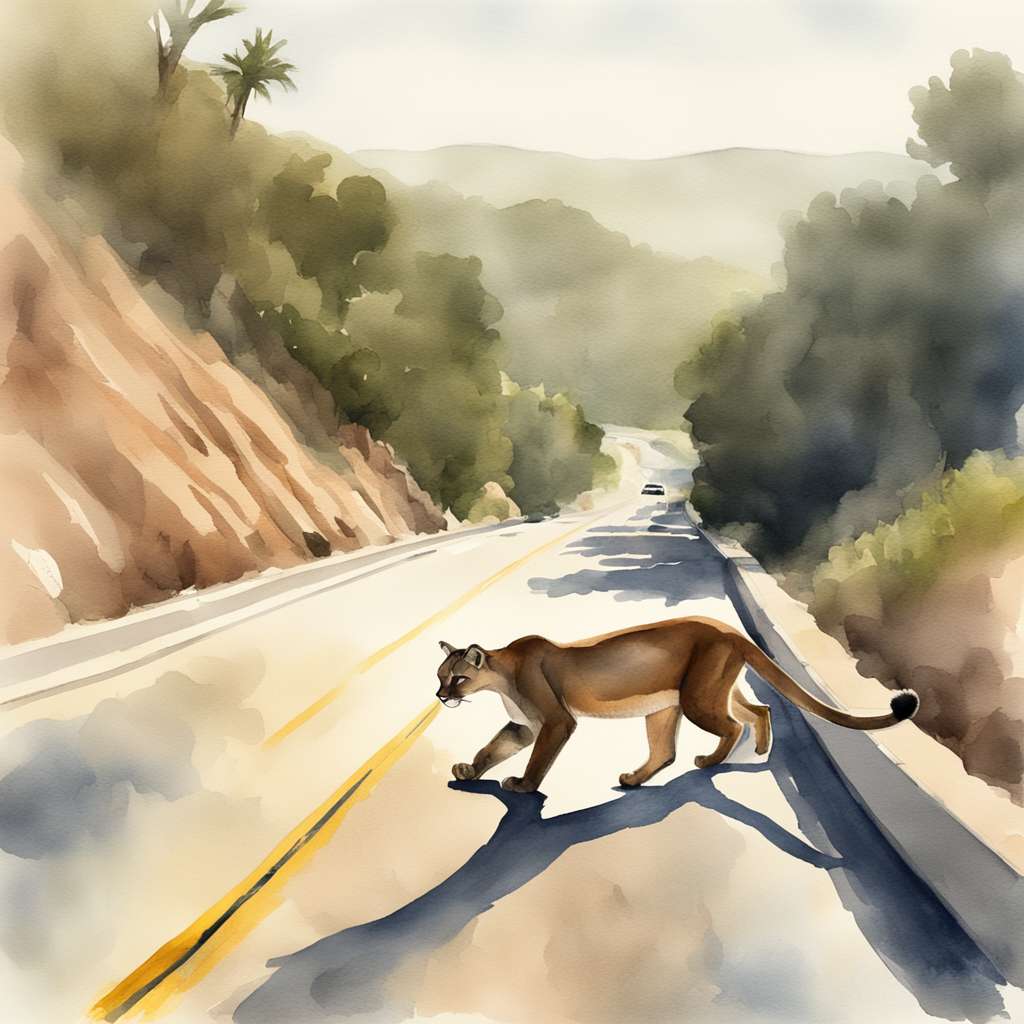
The impact of rewilding on the Santa Monica Mountains: a deep dive into ecological conservation
- The concept of rewilding focuses on conserving and rejuvenating wild areas by reinstating essential predators like mountain lions.
- The Santa Monica Mountains can only sustain two adult male mountain lions, making habitat fragmentation a significant concern.
- A proposed wildlife connector across the 101 Freeway at Liberty Canyon aims to address the genetic isolation of mountain lions, requiring substantial funding from community contributions and state resources.
- In 2016, over 100 mountain lions were killed in traffic collisions, resulting in $276 million in property damages and personal injuries.
The Critical Role of Rewilding in the Santa Monica Mountains
In the heart of Los Angeles, the Santa Monica Mountains stand as a testament to the delicate balance of nature. The concept of rewilding, introduced by Dave Foreman, founder of Earth First!, has gained significant traction as a pivotal strategy for ecological conservation. Rewilding seeks to conserve and rejuvenate wild areas by reinstating essential predators, such as mountain lions, into their original environments. This approach is grounded in the principles of conserving Core habitats, Corridors, and Carnivores, collectively known as the 3 Cs. These principles emphasize minimal human intervention to maintain the integrity of ecosystems.
The Santa Monica Mountains, home to these majestic apex predators, face numerous challenges due to habitat fragmentation. The presence of mountain lions is crucial for maintaining the biodiversity and integrity of the ecosystem. Without them, the balance is disrupted, leading to potential collapse. The rewilding efforts in this region are not just about preserving a species but ensuring the survival of an entire ecosystem. The significance of these efforts cannot be overstated, as they represent a beacon of hope for ecological restoration in urbanized areas like Los Angeles.
- Amazing conservation efforts in urban LA! 🌱......
- Rewilding's complexity poses real challenges... 🤔...
- What if we focused on coexistence instead? 🤨......
Challenges of Habitat Fragmentation and Connectivity
The Santa Monica Mountains are a microcosm of the broader challenges faced by wildlife in urban areas. Habitat fragmentation, primarily caused by the sprawling network of freeways, poses a severe threat to the mountain lion population. The mountains are only large enough to sustain two adult males, forcing young males to venture out in search of new territories. Tragically, many of these young lions meet their end while attempting to cross the perilous freeways. In 2013, a young mountain lion was killed on the 101 Freeway, highlighting the dire need for wildlife connectivity solutions.
The California Department of Transportation (CALTRANS) has responded by proposing a wildlife connector across the 101 Freeway at Liberty Canyon. This initiative, supported by the National Wildlife Federation and the WAN Conservancy, aims to mitigate the genetic isolation of mountain lions and other terrestrial wildlife. The venture necessitates hefty financing, depending on a mix of community contributions and state funding. The success of this initiative could serve as a model for other urban areas grappling with similar challenges.

Efforts to Preserve and Enhance Wildlife Corridors
Organizations like Citizens for Los Angeles Wildlife (CLAW) are at the forefront of advocating for wildlife corridors and habitat connectivity. CLAW envisions a network of connected habitats throughout the Santa Monica Mountains, facilitating the movement of wildlife and ensuring their survival. Urban sprawl has increasingly blocked traditional migratory routes, threatening the ability of animals to access food, water, and mating opportunities.
In response, CLAW has triumphantly campaigned for the acknowledgment of the eastern Santa Monica Mountains as LA’s inaugural Wildlife District. This designation is a crucial step in preserving habitat connectivity. The organization has also raised over $1.6 million to acquire critical connective habitat in Laurel Canyon, safeguarding it from development. Through conservation easements and vigilant monitoring of development projects, CLAW continues to protect these vital corridors.
The importance of these efforts is underscored by the alarming statistics: in 2016 alone, over 100 mountain lions were killed in traffic collisions, resulting in $276 million in property damages and personal injuries. As climate change exacerbates extreme weather events, maintaining habitat connectivity becomes even more critical for the survival of wildlife.
Our Advice on the City
For those visiting Los Angeles, the Santa Monica Mountains offer a unique opportunity to witness the intersection of urban life and nature. A visit to the area provides a chance to explore the ongoing conservation efforts and understand the challenges faced by wildlife in urban environments. For occasional travelers, consider taking a guided tour of the mountains to learn about the rewilding initiatives and the importance of wildlife corridors.
For expert travelers, delve deeper into the conservation strategies by participating in volunteer programs or supporting local conservation organizations. Engaging with these initiatives not only enriches your travel experience but also contributes to the preservation of these vital ecosystems. As you explore the city, reflect on the delicate balance between urban development and nature, and consider how you can contribute to a more sustainable future for both.
Trending now








